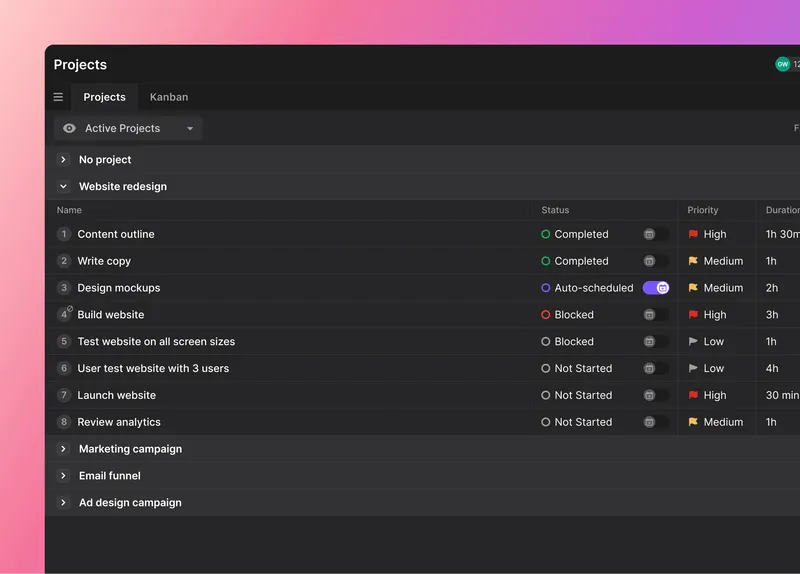Do you ever find yourself struggling to achieve your goals?
Whether in your personal life or at work, creating a plan of action can help you stay focused and achieve success.
But what exactly is a plan of action, and how do you create one that drives results?
This guide will walk you through the six steps to creating an effective action plan. From defining your goals to prioritizing tasks and setting deadlines, you'll have the tools to succeed.
Plus, we'll share tips for implementing your action plan and show you how Motion can help you stay organized and on track.
Don't let your goals slip away. Learn how to create a plan of action today.
What is a plan of action?
Without a plan of action, you're like a plane without a radar – you may move, but you won't know where you're going.
A plan of action is a roadmap that outlines the steps you need to take to achieve your desired outcome.
Think of it as a GPS for success, guiding you toward your destination while helping you stay on track. A plan of action keeps you focused and motivated, especially during times of challenges or distractions. It gives you a sense of direction and purpose, allowing you to progress toward your daily goals.
When writing an action plan, you break down your goal into smaller, achievable tasks that are easier to manage. By doing so, you can track your progress and adjust your approach if needed.
What is a plan of action in project management?
The plan of action in project management is similar to a normal one but includes contingency plans and risk management strategies. This addresses potential obstacles or issues that may arise during the project's execution.
It outlines the project's scope, objectives, deliverables, timeline for completing each task, and the resources required.
 |
The plan of action is an essential tool in project management, as it helps ensure that the project stays within budget and meets its deadlines. It also serves as a communication tool, providing stakeholders, clients, and team members with a clear and concise project overview.
Project managers use various project management methodologies and tools to create a plan of action, such as the Agile methodology, Waterfall methodology, or Gantt charts. Action plans are living documents that need continuous updating throughout the lifecycle of a project.
Who needs a plan of action?
If you're trying to lose weight, a plan of action can help you set doable goals, create a workout routine, and track your progress.
In general, anyone who has a specific goal or objective they want to achieve can benefit from a plan of action. It provides a roadmap for success, helps you stay organized and focused, and increases your chances of achieving your desired outcomes.
Teams and businesses can use a plan of action to ensure everyone is working towards the same goals. It can also help to identify potential roadblocks and allow for course correction when necessary.
Create a plan of action – 6 steps to success
Creating an effective plan of action requires careful consideration and strategic planning.
Here are six steps that can help you develop a great action plan:
Step 1: Define your SMART goals
Without a properly defined goal, it's easy to lose direction and waste time and effort on tasks that don't contribute to your overall success. A lack of clarity around your goals can lead to frustration and demotivation, causing you to give up on your aspirations.
On the other hand, setting clear and specific goals can be the key to success. Goals provide a sense of purpose and direction, helping you to stay focused and motivated.
One popular framework for setting effective goal setting is SMART goals. SMART stands for: specific, measurable, achievable, relevant, and time-bound.
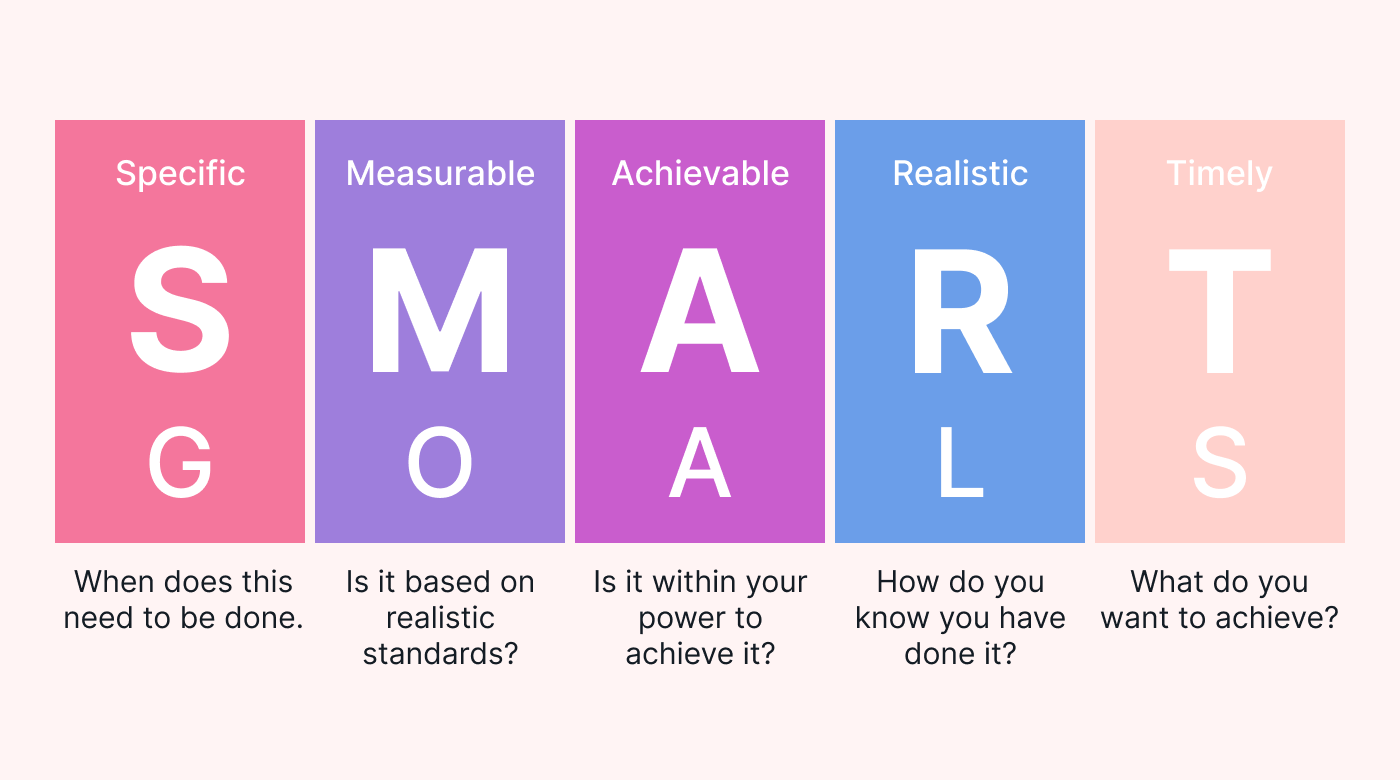 |
By ensuring your goals meet these criteria, you can create a plan of action tailored to your unique situation, giving you the best chance of success.
Step 2: List the steps to achieve the goal
Once you have a clear goal, it's time to identify the tasks and list the steps. This part can include research, gathering resources, or any other details.
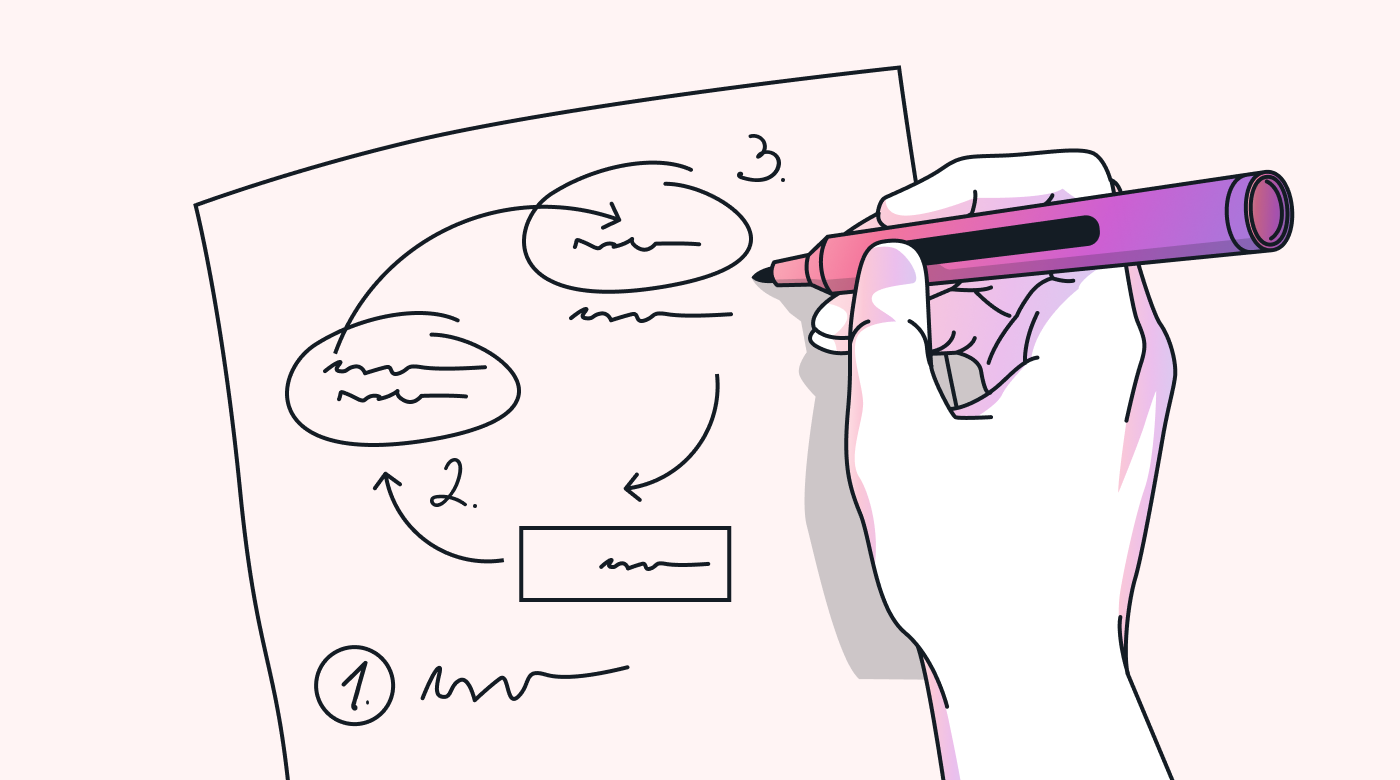 |
You can use a pen and paper to brainstorm and jot down all the necessary steps to achieve your goal. Start by breaking down your main goal into smaller, more manageable steps. Then, identify the specific tasks that need to be completed to accomplish each step.
Alternatively, you can use a project tracker like Motion, which allows you to create a visual representation of your action plan. You can create tasks, set deadlines, assign them to team members, and track progress in real-time. This can help you stay organized and on track throughout the project.
Regardless of your method, breaking down your goal into smaller steps and identifying the necessary tasks is essential to creating an effective action plan.
Step 3: Allocate resources
To allocate resources effectively, you need to determine what resources are required for each task on your list. You can then assign these resources to each task, keeping in mind any constraints such as budget or availability.
For example, if your task requires hiring personnel, you'll need to allocate the necessary budget for recruitment and training. Similarly, if a task requires a software tool, you'll need to allocate the budget for purchasing or licensing the software.
You can track the allocation of resources using a project management tool like Motion or create a spreadsheet.
Effective resource allocation is critical to the success of your plan of action, as it helps ensure that you have the necessary resources to complete each task on time and within budget.
Step 4: Prioritize tasks
With your resources allocated, it's time to prioritize tasks.
Prioritizing tasks is essential to ensure that you're making the most of your resources and time. By ranking tasks in order of importance, you can ensure that you're progressing efficiently toward your goal.
Prioritization also helps you spot any potential roadblocks or bottlenecks that might slow you down. Also, by tackling the most critical tasks first, you can ensure that you're not wasting resources or getting sidetracked by minor issues.
Additionally, prioritization can help you make better decisions about how to allocate your resources. This is because you'll have a clear understanding of which tasks are most crucial to achieving your goal.
Step 5: Set milestones and deadlines
By breaking down your larger goal into smaller milestones, you can better measure your progress and stay motivated as you work towards your overall objective.
Additionally, setting deadlines for each milestone can help you complete each task within a specific timeframe.
 |
For example, if your goal is to write a book, you might set a milestone to complete the first draft of your manuscript within three months, with a deadline of completing the first ten chapters within the first month. These milestones and deadlines will keep you accountable and help you stay focused on the tasks that will ultimately lead you to your goal.
Step 6: Monitor and revise your plan
Finally, monitoring your progress and revising your plan as needed is essential.
You can use various tools like a task tracker, Gantt chart, or project management software to monitor your progress.
Regularly check if you're on track and if any adjustments need to be made to your plan. Revising your plan may involve re-evaluating your goals, adjusting your timeline, or reallocating resources.
By regularly monitoring and revising your plan, you'll be able to stay agile and respond effectively to any changes or challenges that arise.
Remember that a plan of action is not set in stone and should be treated as a living document that can be adapted as needed. This will help you achieve your goals more effectively and efficiently.
Tips for implementing your plan of action
Now that you have a plan of action let's look at some tips to help you succeed.
Here are some tips to help you implement it effectively:
Use task management software
Task management software can help you stay organized and keep track of your progress. It can also help you delegate tasks and collaborate with others.
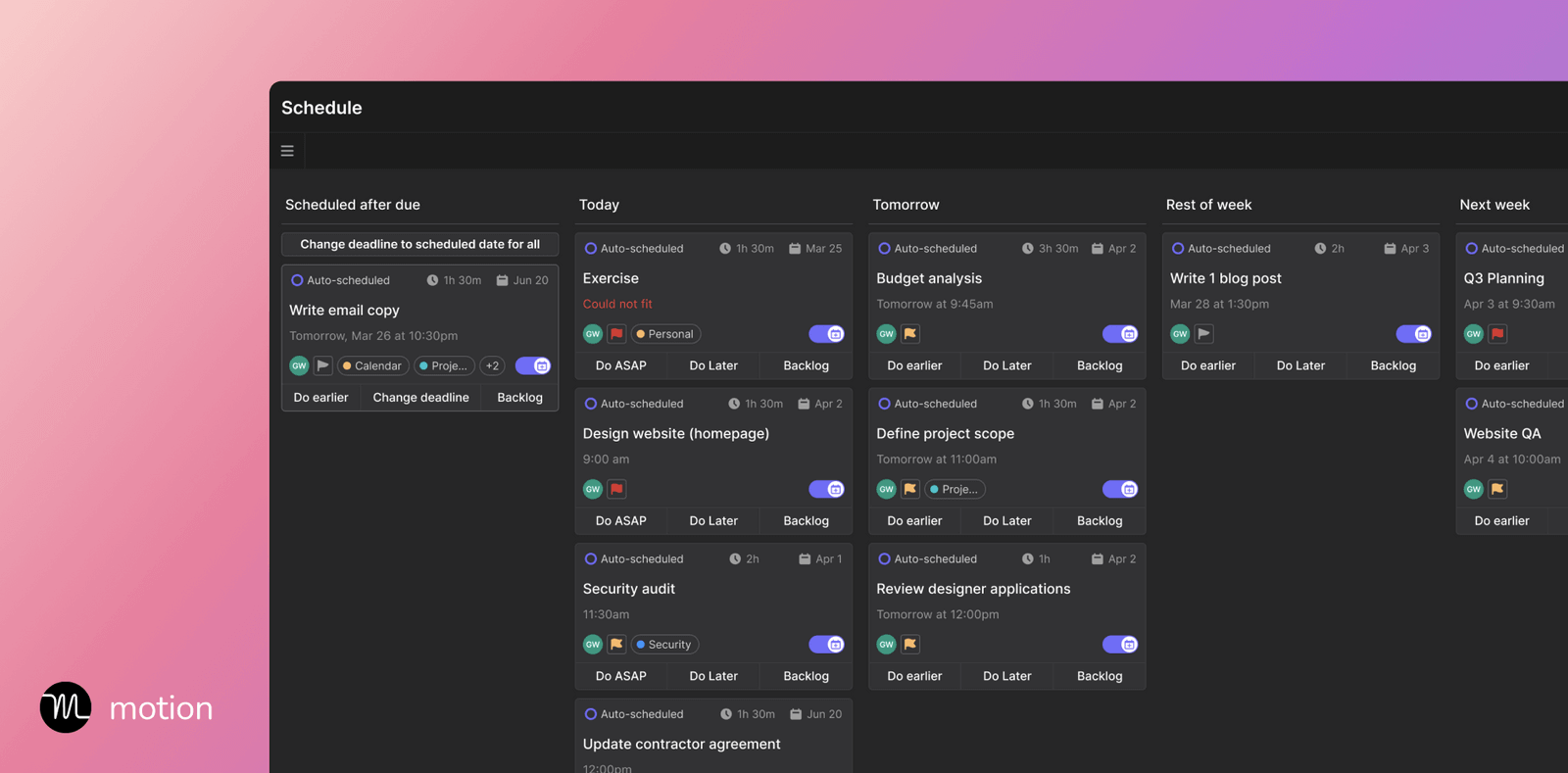 |
A great example of task management software is Motion. Motion allows you to create and assign tasks, set deadlines, and track progress all in one place. It also includes features like file sharing and team collaboration, making it a great tool for project management.
With Motion, you can easily monitor your plan of action and make any necessary revisions to ensure you stay on track toward achieving your goals.
Use or create templates
Creating templates for common tasks can save you time and ensure consistency across your plan of action.
Templates can be a great way to jump-start your plan of action and ensure that you don't miss any important steps. You can create your own custom templates to suit your specific needs. Or use Motion’s customizable dashboard to track and plan your tasks or strategy.
Set up real-time alerts and assign dependencies
Real-time alerts can help you stay on top of your tasks and meet your deadlines.
By setting up real-time alerts, you can receive notifications when tasks are completed or a deadline is approaching. This can help you stay on top of your tasks and adjust your plan of action as needed.
Assigning dependencies can also ensure that tasks are completed in the right order. And assigning dependencies can help you identify which tasks need to be completed before others can begin – assisting the team in completing the tasks in the correct order so that your project stays on track.
Using task management software like Motion can make setting up real-time alerts and assigning dependencies easy and efficient.
Check off completed tasks
Checking off completed tasks can be a great way to stay motivated and track your progress. It’s also a visual representation of your progress, which can be helpful when communicating with others or providing updates on the status of a project.
Discuss late or pending tasks
If you're falling behind on your plan of action, it's important to discuss any late or pending tasks with your team.
Open communication with your team about late or pending tasks can help you address any bottlenecks or roadblocks preventing progress. By discussing these issues and working together to find solutions proactively, you can keep your project on track and ensure its success.
How Motion helps implement your plan of action
Motion is an AI-assisted task manager designed to help you achieve your plan of action.
It provides a centralized platform for creating and managing tasks, deadlines, and progress updates.
With Motion, you can easily break down your plan of action into smaller, manageable tasks.
You can also:
- Track progress in real-time
- Receive notifications for upcoming deadlines
- Collaborate with team members in a shared project card
Motion helps everyone stay accountable to the plan of action, providing visibility into task completion and progress updates.
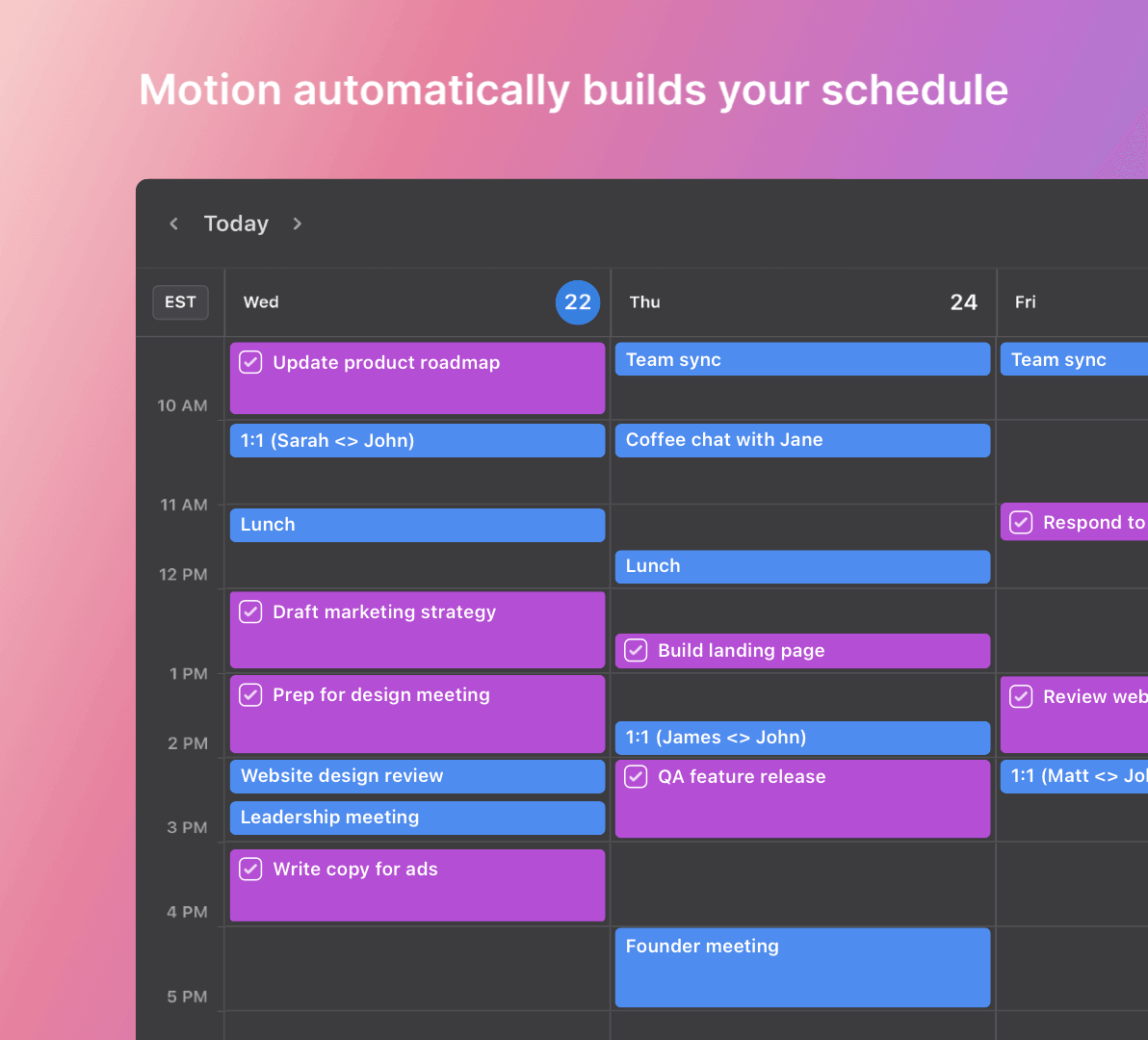 |
Using Motion can help you and your team save time and avoid the frustration of sifting through endless email threads and multiple tools to manage tasks. It's an AI task manager that helps you and your team focus on your work by taking care of the manual management for you.
Make your best plan of action
Creating a plan of action is necessary for achieving personal or professional goals.
Following the six steps outlined above, you can define your goals, prioritize tasks, and set deadlines to stay focused and succeed.
Remember, remaining flexible and adjusting your plan as needed is important. And implementing your plan of action is easier with the help of tools like Motion.
With Motion, you can easily track your progress, collaborate with team members, and make adjustments in real-time.
Don't let your goals slip away. With determination, flexibility, and the right tools, you can achieve anything you set your mind to.
Grab your 7-day free trial of Motion.


